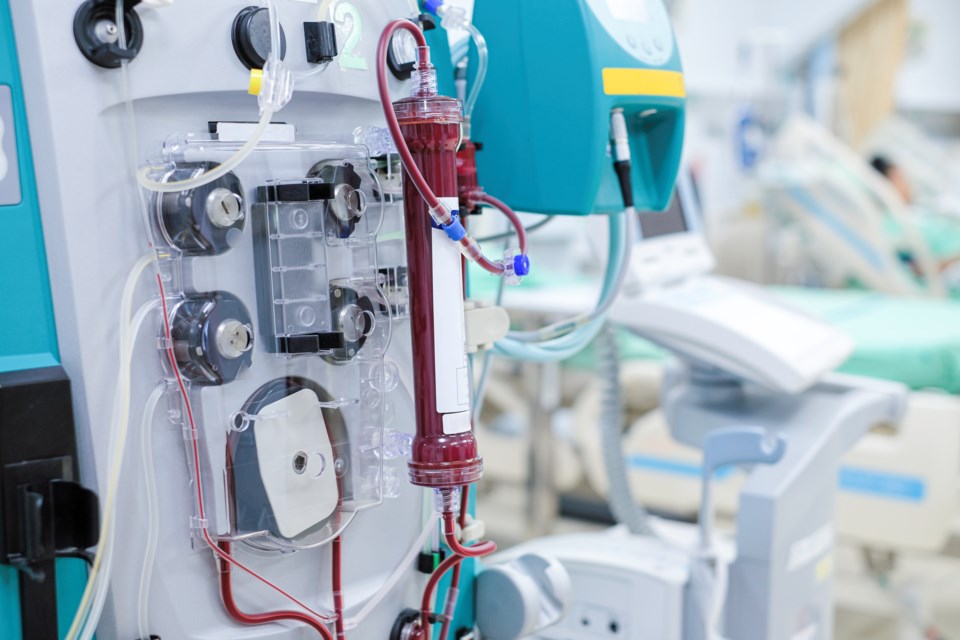DRYDEN — Northwestern Ontario is on track to adding at least four dialysis stations to its overburdened network for kidney care.
About 1,000 square feet (93 square metres) of the Dryden Regional Health Centre will be renovated to accommodate four hemodialysis stations, Kenora–Rainy River MPP Greg Rickford and hospital officials announced Monday.
That could be expanded to six stations, Rickford added.
Dialysis availability in Dryden is “something that I think needed to come sooner rather than later,” Rickford said.
Once they’re ready “in the next couple of years,” he said, the stations will bring life-sustaining care to a city where it wasn’t available before.
Currently, Dryden-area residents in need of hemodialysis must go to Thunder Bay’s regional hospital or one of its “satellite” dialysis centres in Fort Frances, Kenora and Sioux Lookout. And all those places are operating at or near capacity.
The dialysis unit at Thunder Bay Regional Health Sciences Centre is open six days a week from 7 a.m. until 11 p.m.
Patients, whose kidneys are failing, attend three treatments per week. Each treatment visit lasts up to 4½ hours.
The Thunder Bay unit is operating near capacity while the Fort Frances, Sioux Lookout and Kenora satellites are at capacity.
That means kidney patients in the Dryden area have to drive up to four hours for dialysis treatment in other communities, Rickford said.
And getting to those dialysis appointments can be even more challenging on “days like today,” Rickford said, referring to snowy weather that prompted his team and the Dryden hospital to switch Monday’s news conference from an in-person event to a Zoom meeting hosted by Dryden hospital chief executive Doreen Armstrong-Ross.
The cost of installing dialysis stations and establishing a Dryden satellite to the Thunder Bay dialysis unit will run into “several million dollars” and possibly more than $10 million, but the province will cover it, Rickford said.
Thunder Bay hospital president and CEO Rhonda Crocker Ellacott termed Monday’s announcement “an incredibly exciting and good news announcement, and yet another positive move by our province to provide even better care closer to home for the people of this region.”
She pointed out that she and others in Thunder Bay had the option of joining the news conference virtually “but patients don’t have the luxury of receiving care virtually when they need dialysis care.”
That’s why the Dryden satellite unit is “critical for the North,” she said.
“Since 2015 the need for hospital hemodialysis in our region has increased by 31 per cent,” she said. “That is twice the increase in the same period for Ontario as a whole.”
The Dryden hospital is “beyond grateful” for Rickford’s support in bringing dialysis services to the city, Armstrong-Ross said.
Dialysis does the kidneys’ job of removing waste and excess fluid from the blood of a person who has kidney failure.
In hemodialysis, a machine removes blood from a patient’s body, filters that blood through a kind of artificial kidney, and then returns it to the body.
Hemodialysis is done at a hospital. Another type of dialysis, peritoneal dialysis, can be done at home.
About 30,000 people across Canada received dialysis in 2021, according to the Canadian Institute for Health Information.
